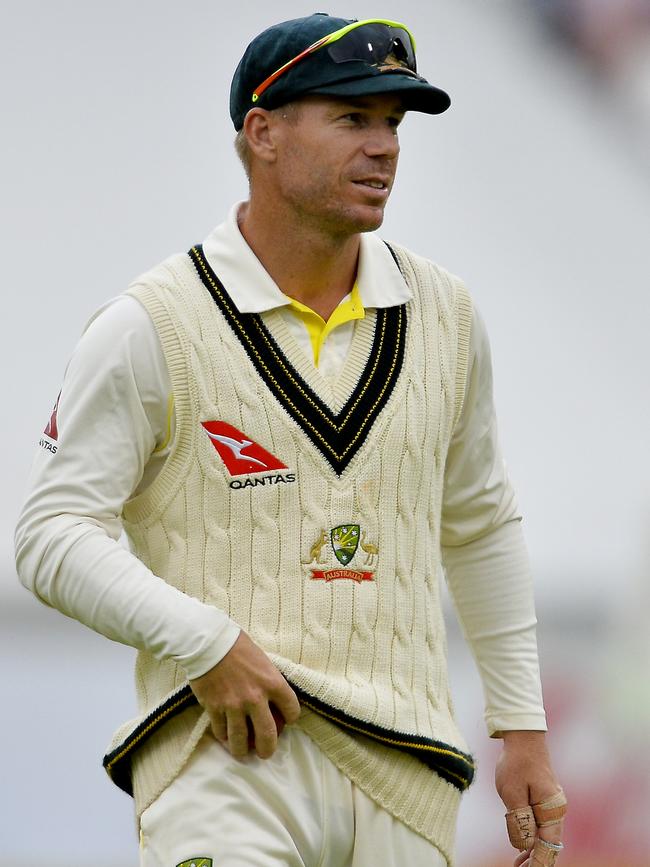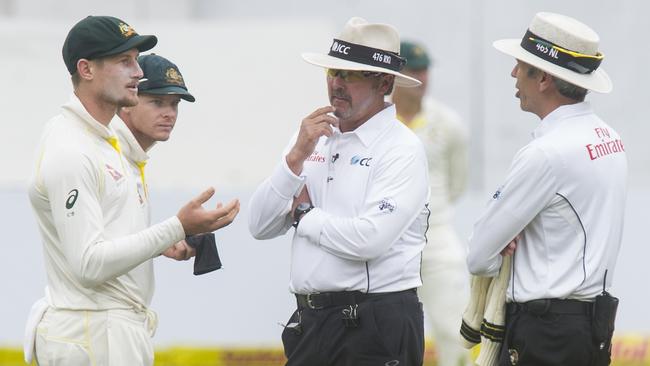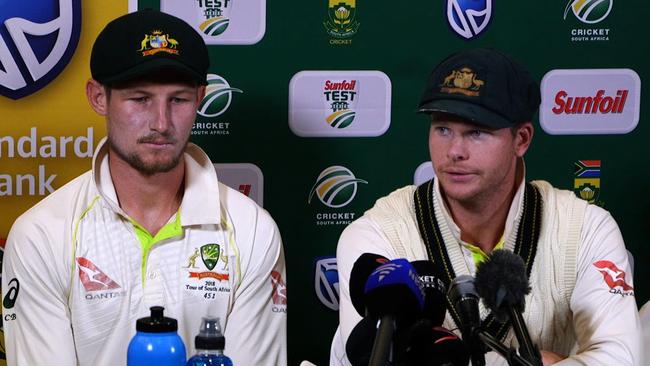Why Australia’s ball-tampering plan never had a chance of working
The craziness of Australia’s attempt at ball-tampering in South Africa was that the playing conditions on the day meant it never had a chance of working.
The craziest thing about Sandpapergate was that sandpaper was a waste of time.
On that infamous day in Cape Town when Australian cricket fell from grace, the ground was damp from showers which feel around noon not long before the notorious event took place.
The ball was already getting moist.
The chances of reverse swing with a ball like that was next to zilch, sandpaper or no sandpaper.
The umpires looked at the ball after they took it from Cameron Bancroft and did not even bother replacing it because they did not feel it was damaged.
An official on duty in the Test told me a ball the South Africans used in the game actually looked worse (though he did not suspect improper conduct).
A year on at least eight people have lost their jobs because of a devious and flawed plan that could never work.

Mad. Stupid. Crazy. Call it whatever you like.
But the utter fruitlessness of it sums up the entire affair.
A year on we are still trying to make sense of what happened that day in Cape Town but a special called Downfall to be shown on Sky News on Sunday will put some context around it.
It is a study more about bubbles than sandpaper.
About how sportsmen who exist inside a bubble can become so consumed by their carefully choreographed life they can become detached from the real world.
The documentary confirms what respected scribe Gideon Haigh calls an arms race between the Australian and South African teams to make the old ball reverse swing.
This obsession was the embodiment of a win at all costs attitude that was making Australia playing ugly, self-entitled cricket.
The players had just bulldozed their way over Cricket Australia in the latest pay dispute and felt beyond reproach. Nothing was off the table in terms of winning formulas.

The swagger was also reflected in a #beatEngland hashtag which was Australia’s social media mantra earlier in the summer.
Another cricket writer, The Australian’s Peter Lalor, who covered the series, recalls listening to the stump mike and hearing AB de Villiers and David Warner trade ball tampering barbs on the first morning of the first Test when Australia were batting.
Day by day the pressure and the barbs mounted.
De Villiers denies the accusation but it has always been thought he was the man who tipped off South Africa’s local broadcasters that something untoward was happening to the ball and they should place a camera exclusively on the ball as it was sent from the keeper, via the fieldsmen, to the bowler.
And this is where Warner made a severe error of judgment.
He obviously concluded they were more obsessed about catching him than exposing the crime and he handed ball management duties to Bancroft who was caught with his pants down or at least with sandpaper down the front of them.

South Africa were playing the ball even more than the man.
The year anniversary of the affair spotlights the fact that moving on will not be as easy as it sounds.
There is still tension among Warner and the bowlers which has never been properly addressed.
The entire affair has made the most routine tasks more complex.
When Warner and Steve Smith passed through the Australian cricket camp in the United Arab Emirates recently Australian Cricket’s video team got a few “grabs’’ from them. People higher up the chain at Cricket Australia did not like what they saw, feeling they should either say nothing or face the music – but a few plastic smiles missed the message.
Some of the most dramatic chapters in this sage may yet to be written ... all over a plan that was never going to work.
Originally published as Why Australia’s ball-tampering plan never had a chance of working


